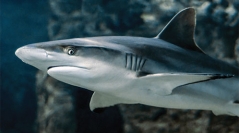

 Comptes Rendus Palevol
21 (1) - Pages 1-16
Comptes Rendus Palevol
21 (1) - Pages 1-16The influential Greek philosopher Aristotle (384-322 BCE) is almost unanimously acclaimed as the founder of zoology. There is a consensus that he was interested in attributes of animals, but whether or not he tried to develop a zoological taxonomy remains controversial. Fürst von Lieven and Humar compiled a data matrix from Aristotle’s Historia animalium and showed, through a parsimony analysis published in 2008, that these data produced a hierarchy that matched several taxa recognized by Aristotle. However, their analysis leaves some questions unanswered because random data can sometimes yield fairly resolved trees. In this study, we update the scores of many cells and add four new characters to the data matrix (147 taxa scored for 161 characters) and quote passages from Aristotle’s Historia animalium to justify these changes. We confirm the presence of a phylogenetic signal in these data through a test using skewness in length distribution of a million random trees, which shows that many of the characters discussed by Aristotle were systematically relevant. Our parsimony analyses on the updated matrix recover far more trees than reported by Fürst von Lieven and Humar, but their consensus includes many taxa that Aristotle recognized and apparently named for the first time, such as selachē (selachians) and dithyra (Bivalvia Linnaeus, 1758). This study suggests that even though taxonomy was obviously not Aristotle’s chief interest in Historia animalium, it was probably among his secondary interests. These results may pave the way for further taxonomic studies in Aristotle’s zoological writings in general. Despite being almost peripheral to Aristotle’s writings, his taxonomic contributions are clearly major achievements.
Greek philosophy, history of zoology, biological nomenclature, systematics, metazoans, genus, species, Linnaean categories